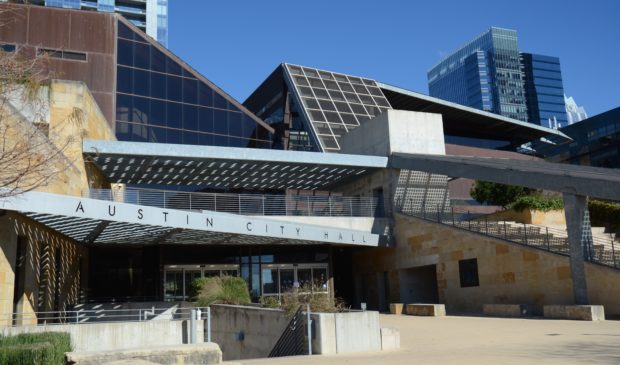City hoping to fast-track some changes to land use code
Tuesday, January 30, 2024 by
Jo Clifton The City Council Housing and Planning Committee last week approved a resolution urging the entire Council to move forward expeditiously with several amendments to the Land Development Code, particularly as they relate to Equitable Transit Oriented Development, called ETOD in city parlance. The resolution is part of proposed Land Development Code changes related to Project Connect as well as code changes to reduce minimum lot sizes for housing. Committee members discussed changes they want to see in the code in the near future. Those changes include several that Council will initiate at Thursday’s meeting.
Sponsored by Council Members Natasha Harper-Madison and Ryan Alter, the committee’s resolution relates specifically to code changes initiated last year as a part of the HOME initiative. Those changes address reducing lot sizes for single-family homes, adjusting height and setback requirements, and increasing density.
Mindful of legal problems the city faced as a result of passing three ordinances designed to allow for development of housing in more places, such as residential uses in commercial areas, staff has redesigned the processes for adding the revised ordinances.
Assistant City Attorney Patricia Link told committee members that city staff planned to give citywide notices for hearings related to density bonus zoning districts. This new density bonus district is modeled on provisions within the VMU2 regulations that the court found impermissible because of lack of notice. The new regulation will allow for the development of mixed-use buildings on commercially zoned lots throughout the city. In exchange for providing affordable housing, the rezoning process will allow for an extra 30 feet of height.
Mayor Kirk Watson asked questions about the process for adopting the new regulations. He told his colleagues, “Because this is one of the tools that focuses on affordability, we need to get this right. By putting it into the code, what notice are we going to need?”
Link said, “The first step would be to create the district and put it into the code. In order to do that, we would give published notice, and then it would go to the Planning Commission for recommendation and then to Council for approval. That is the only notice that needs to happen because it’s not touching anyone’s existing regulations. It is just going to exist, as we say, on paper, in our city.”
She explained that if Council approves the creation of the district, someone will come into the city and ask to be rezoned into that combining district. “When they do that, staff will review when it goes to the land use commission,” and property owners who are within 500 feet will get individual notice. Those within 200 feet will have the right to protest.
Once Council starts considering site development standards, Link said the Law Department would recommend a joint meeting with Council and the Planning Commission and then separate hearings at both the Planning Commission and Council, before Council takes action to change those regulations.
Alter wanted to know whether there was a process the city could use to speed up zoning changes for developers who want to participate in the density bonus program. The answer was no.
Alter and Council Member Paige Ellis were both concerned about changes to impervious cover regulations as a result of allowing smaller lot sizes.
Alter said, “As we look at site development standards, I do believe that impervious cover is something that is unique and kind of has a higher standard than, let’s say, just addressing a setback. And so, as staff works through the complexity of what we need to do or what recommendations they’re going to make from the watershed department as it relates to impervious cover … those might take more time. And we need to get this right, because it’s so important and complex and so I appreciate the chair, including the language about those standards that are ready because it is very possible that those are not ready.”
Ellis agreed, adding that she wanted to make sure that changes to the code would not impact other ordinances, such as the Save Our Springs Ordinance. Staff assured her that they would not be proposing changes that would impact the SOS regulations.
The Austin Monitor’s work is made possible by donations from the community. Though our reporting covers donors from time to time, we are careful to keep business and editorial efforts separate while maintaining transparency. A complete list of donors is available here, and our code of ethics is explained here.
You're a community leader
And we’re honored you look to us for serious, in-depth news. You know a strong community needs local and dedicated watchdog reporting. We’re here for you and that won’t change. Now will you take the powerful next step and support our nonprofit news organization?






